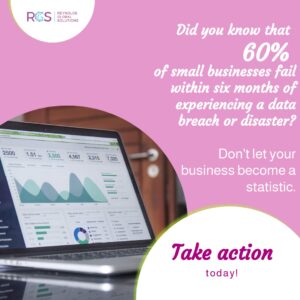Data disaster can strike businesses of any size, causing significant damage to operations and reputation.
Data disaster can also result to data loss, this can have serious implications for any business. Despite this, a surprising number of businesses don’t even have a disaster recovery plan in place.
Data loss can affect business continuity especially if you are unable to access the information needed to keep their business rolling.
Through our proactive approach to backup and disaster recovery (BDR) solutions, we can assist with creating an effective disaster recovery plan and Incident Response plan for your business .
Below are tips on “4 Ways to Prepare for a Data Disaster”.
1. Talk to Your IT Provider about Data Disaster.
Your provider who is your trusted advisor, your go-to, and where to begin the conversation on IT solutions. An IT provider can provide a risk assessment or disaster recovery plan and then offer solutions to save you from data loss.
Losing the spreadsheet you have worked on for months would be disastrous or missing project deadline as a result of missing or corrupt files and then having to waste time recreating corrupt or lost files to beat the deadline.
In any case, a BDR solution plan can help alleviate these stressors.
2. Be a Part of the Conversation.
You know better than anyone what files you need access to for a successful day at work. So you must be involved in the process of backing up your data. Then, should your company fall victim to ransomware or data loss, you will know how to respond.
Your IT provider will ultimately be responsible for recovering your data, managing and maintaining your backups.
When the disaster recovery solution is put into place, request for user training from your provider for knowledge purposes as an active role in your business.
3. Know That You Are Protected.
Always ask questions regarding the solution provided by your Provider. You may ask, “If we fall victim to ransomware, or our company files are lost, what do we do?” With this simple question, you can prevent costly downtime and data loss.
With one question, you can protect your office and coworkers from being locked out of your files indefinitely. Asking this question can help you establish if you do have an effective disaster recovery plan.
Gently remind your manager that when it comes to a data disruption, it’s not a question of if but when.
According to the 2021 Global Data Risk Report by Varonis, on average, 33 percent of all folders used by a company are open to everyone. This is a problem since an employee can tamper with data.
4. Save Your Work.
This sounds easy and like a no-brainer, but with my years in IT, you have no idea how saving work sometimes falls by the wayside. Even if your machine is being backed up, and your files are being protected, you still need to save often.
Start by backing up all important data, regularly testing and verifying backups, and implementing security protocols to prevent data breaches.
Should disaster hit and files need to be recovered, your progress will be lost if you haven’t saved your work. There is always a risk of losing some work in the event of a disaster, but if you save often, the risk decreases ten-fold.
Lastly, create a comprehensive data disaster recovery plan that outlines the steps to be taken in case of a data disaster. Ensure that all your team members or employees are aware of the plan and know their roles in executing it.
Contact a member of our team to discuss which solution best fits your needs

